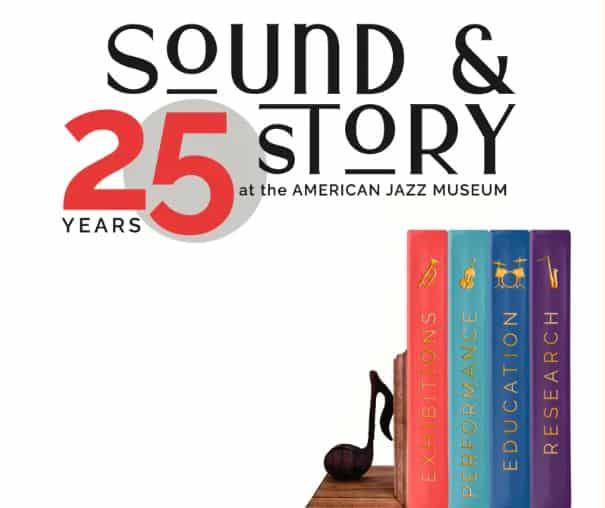American Jazz Museum turns 25: ‘The realization of a dream’

At the ripe old age of 25, the American Jazz Museum is the nation’s leading institution dedicated to expanding the influence, awareness, and appreciation of American jazz. The Blue Room is an operational jazz club within the jazz museum, featuring live performances on Friday, Saturday, and Monday nights.
And, prepared to make the next 25 years even better
By Harold Smith, KC Studio Magazine
When the American Jazz Museum opened in 1997, President Barack Obama had just begun his first term as an Illinois state senator; social media consisted of electronic bulletin boards and chat rooms on America Online; Congressman Emanuel Cleaver was Kansas City’s first Black mayor; it had been 27 years since the Chiefs had been in a Super Bowl; and worldwide pandemics were something only found in history books and scientific journals.
Since then, the nation has been shaken back and forth by tragedy and triumph. Recessions, COVID-19, terrorist attacks, racial unrest, and gun violence have gripped the country’s attention. In those 25 years, the American Jazz Museum has endured. Not only has it endured and prospered but it is positioned and prepared to make the next 25 years even better.

Rashida Phillips, executive director of the American Jazz Museum.
The centerpiece of the 18th and Vine historic jazz district, the AJM celebrates the history of American jazz with a focus on jazz musicians and movements from Kansas City’s storied jazz history.
The breadth of its programming immortalizes the local and national footprint of jazz musicians from Count Basie, Jay McShann and Mary Lou Williams to Bobby Watson, The McFadden Brothers and Ida McBeth.
“The AJM fulfills the realization of a dream,” says Rashida Phillips, AJM’s executive director. “18th and Vine became a re-imagination of a once dense, vibrant and jazz-infused community near the turn of the century that gave rise to businesses, bonded families and creative success.
“In 1997 this community anchor opened its doors to the great promise of celebrating and presenting the imprint of jazz culture and the community that makes and upholds it.”
Over the last quarter century, the AJM’s programming has cast a wide net to include all ages and entertainment tastes.
Dazzling permanent exhibits have joined rotating gallery exhibitions of works by eminent African American artists such as Tony Ramos, Ed Dwight and Emma Amos, as well as Kansas City’s Light in the Other Room group of Black artists.

The AJM is currently featuring a special exhibition ‘Sound & Story: 25 Years at the American Jazz Museum.’ It continues through International Jazz Day, April 30, 2023.
A highlight was the museum’s collaboration with the David C. Driskell Center to present “Convergence: Jazz, Films, and the Visual Arts” in 2013-14, which included a standing-room-only lecture by Driskell, artist and leading scholar in the history of African American Art.
This fall, the museum presents “Sound & Story: 25 Years at the American Jazz Museum,” an exhibit of objects, artifacts and vinyl banners based on the AJM’s four pillars of exhibition, research, performance and education. The exhibit opened Sept. 15 and continues through International Jazz Day, April 30, 2023.
In addition to exhibitions, the museum’s broad range of offerings has included weeknight jam sessions, weekend concerts, major jazz performers at the Gem Theater, jazz camp, poetry competitions for high school students, and even a story time for small children.
“The mission of the American Jazz Museum in Kansas City is to celebrate and exhibit the experience of jazz as an original American art form through performance, exhibition, education, and research at one of the country’s jazz crossroads — 18th & Vine,” Phillips said. “Our acts on the Blue Room or Gem Theater stages continue to showcase the best of local talent and national/international jazz stars. We’ve created original and community-partnered exhibitions, hosted blockbuster traveling exhibits, and highlighted core influential jazz masters.”
Just like the rest of the world, the AJM is firmly in the crucible of changing times. Unlike much of the world, however, the museum has a firm grasp on how it plans to tackle the next stage of its evolution.
These plans include reconfiguring the spaces to provide for more presentation of unseen artifacts from their archives; upgrading to state-of-the-art sound and performance stages; stepping up the technical engagement with special features; and refreshing the visitor experience so that it immerses visitors in the music and culture in a longer, deeper and more meaningful way.
History speaks fondly of Kansas City’s place in the development of jazz. It is only fitting that the AJM will move in a way that tomorrow’s history will speak fondly of their endeavors today.
“Kansas City was such a profound and critical contributor to the founding and evolution of jazz that the museum must equally state, create and innovate over time,” Phillips said. “We pride ourselves on celebrating this living artform as a representative of our very DNA. That ultimately, through this music, we learn, present, participate and celebrate a greater and more expansive self.”
For more information about the American Jazz Museum, 816.474.8463 or americanjazzmuseum.org.
—

